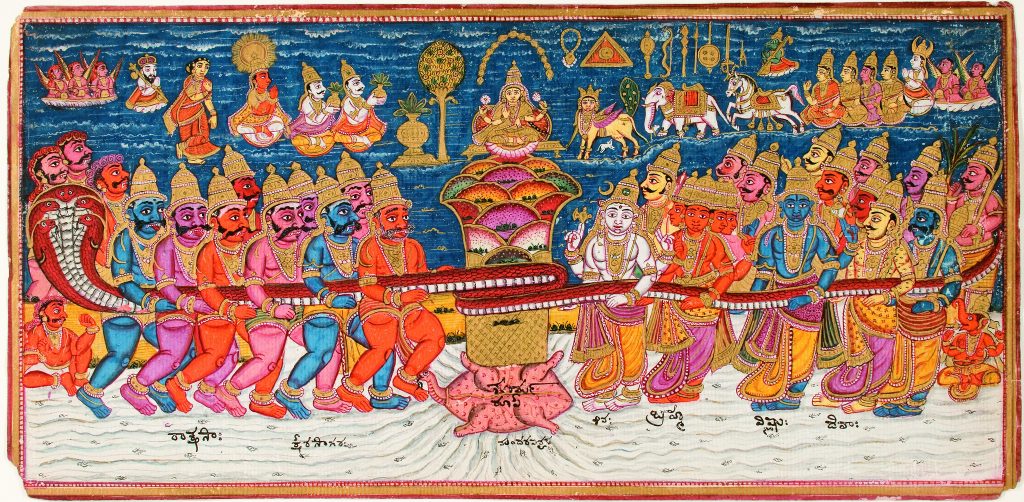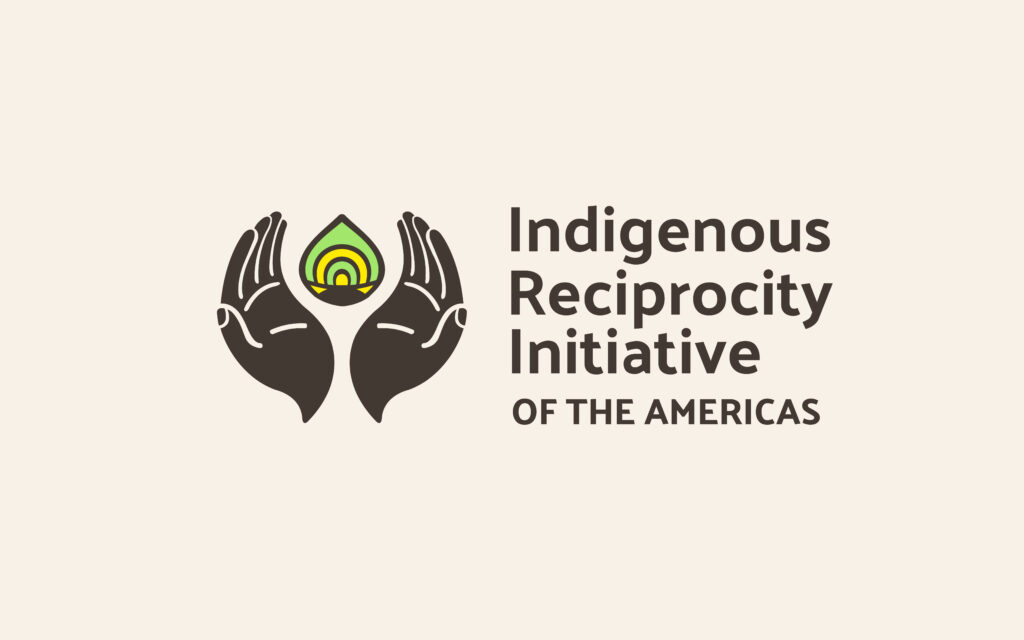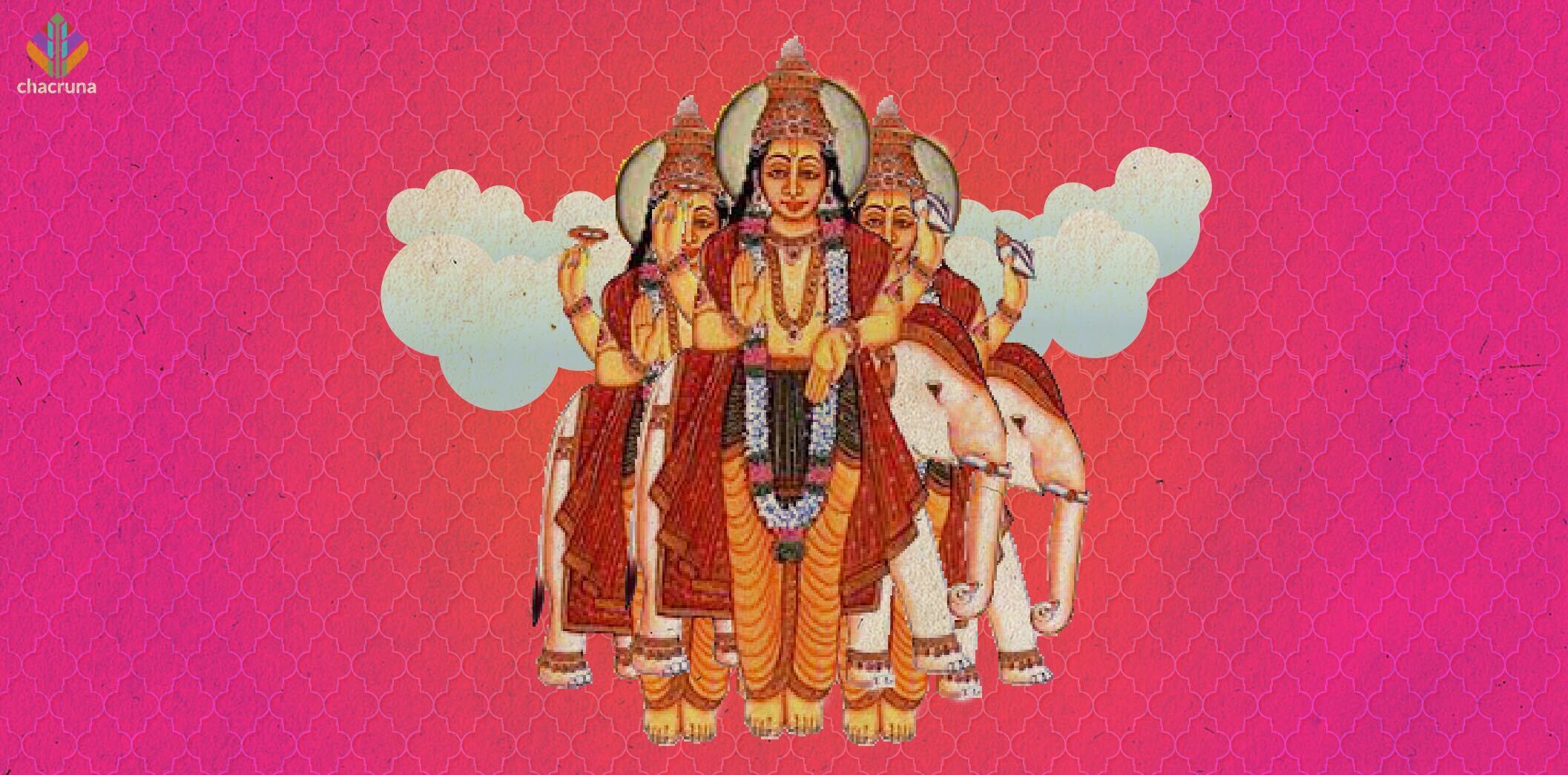- Soma and the Sacred Feminine: Reflections from Ancient Indian Myth - March 31, 2021

Soma. Say it aloud: “SO-ma.” Slides off the tongue, doesn’t it? This delicious ancient Sanskrit word has long been associated with psychedelic culture. Why? Popularized by Aldous Huxley and other prominent figures in western psychedelics including Valentina and Gordon Wasson, soma invokes a potent overlap between the rich realm of Indian mysticism and spiritually oriented psychedelic use. Sometime in the second millennia BCE a number of Vedic Sanskrit hymns were compiled into what is now known as the Ṛg Veda. The Ṛg Veda comprises the oldest extant compositions in any Indo-European language and is the world’s oldest surviving religious text (1500–2000BCE). Comprised of over 10,000 Sanskrit verses, the Ṛg Veda consists of 1,028 hymns divided into 10 books (called maṇḍalas, literally “circles”). The most commonly invoked deities are Indra the heroic leader of the gods, Agni the fire god, and Soma, the god of a vision-inducing magico-medicinal, plant-pressed concoction of the same name. The active ingredient of this divine brew is probably some sort of hallucinogenic plant, also called soma, native to the Himalayan regions of India. Soma is then a plant and its brew, and the Vedic god who personifies both to which an entire Book of the Ṛg Veda (comprised of 114 hymns) is dedicated.
Soma: The Magico-Medicinal Plant
So, which plant is the soma plant? If you’re looking for a clear-cut answer to this question, keep looking—and steer clear of anyone who presumes to have one. The accounts are conflicting and the word “Soma” may well refer to dozens of concoctions used over hundreds of years. Much like “wine”—is that chardonnay? Merlot? Ice wine? Beaujolais? What’s that, you say, all wine can be traced to grapes? How about peach wine? Plum wine? Blueberry wine? —candidates for the active ingredient in Soma are also quite varied, and include ergot, ephedra, wild mushroom, rhubarb, chicory, cannabis sativa, sugarcane, and sacred lotus. Whatever the plant, we know that it was pressed between stones, filtered through sheep’s wool and mixed with other substances, such as water, milk, and honey. When properly prepared, it would induce hallucinogenic, ecstatic, and energized states presumably leveraged for religious experiences, healing, and rites of passage. It was offered as a libation to the gods as part of the Vedic fire sacrifice and was also consumed by the priests and the sacrificer. While there is much margin for conjecture on the nature and uses of Soma in the world behind the Ṛg Vedic text, we can glimpse the profile of the mythic personification of both the soma plant and the soma brew by its described use in ancient religious rituals: the Vedic god Soma.
“When properly prepared, [soma] would induce hallucinogenic, ecstatic, and energized states presumably leveraged for religious experiences, healing, and rites of passage.”

Join us at Sacred Plants in the Americas II
Soma: The Vedic God
Soma’s virtues abound: he is master of plants, healer of disease, giver of riches and—most importantly—bestower of immortality to the gods. He is venerated as wondrous, wise, and mighty, and praised as both heroic and sagacious. Soma’s is variously invoked as guardian, bard, enlightener, strengthener, foremost friend of gods. As soma personified, he is hailed as immortal, everlasting, as ambrosia itself, indeed the lord of life. Most important for this discussion, Soma is to my mind the foremost face of feminine attributes within the Vedic world.
Masculine and Feminine Principles
By masculine and feminine here, I’m not referring to the biological, psychological, or sociological spheres, but to the archetypal realm undergirding the human experience—the wellspring of art, religion, and myth. The Vedic account of human life places the interplay of the feminine and masculine energies as foundational to human consciousness. It describes truths about human experience that are not about the world, but rather our experience of it. A prime example of this is our experience of the sun and moon: while they are of vastly different sizes and vastly different distances from the earth, these differences cancel out such that they appear nearly identical in size to the human eye. These celestial orbs are understood as emissaries of divine feminine and divine masculine; two primordial principles that are dramatized in the hymns of the Ṛg Veda as Agni, the fire god, and Soma, the god of the magico-medicinal soma plant and its brew.
“By masculine and feminine here, I’m not referring to the biological, psychological, or sociological spheres, but to the archetypal realm undergirding the human experience—the wellspring of art, religion, and myth.”

Soma: The Vedic Face of the Feminine
As the Vedic face of the feminine, Soma is known as a child of the waters. That the water element is associated with the archetypal feminine is unsurprising: as the energetic opposite of fire, water creates space to receive all things, while fire devours all in its path. The amniotic association is important here, as is the connection between the feminine, the lunar, and the female reproductive cycle. Soma is also known as the great nourisher, another feminine function, whether fulfilled by males or females. He is hailed as the sustainer of heaven, the food of the gods, and even as the milk of heaven. A celestial analogue to mother’s breastmilk, Soma supplies ambrosia to the gods for their eternal nourishment. Hence, Soma is an ancient Indian face of the feminine.
In Soma we have an ancient Vedic predecessor to the later idea of Śakti (the Goddess) powering the male gods and all of the universe. Again, the gods are energized by soma: Indra drinks copious amounts in order to slay the serpent-dragon Vṛtra, personification of drought and adversity. Vṛtra hordes the waters of the world, which Indra must rescue for the welfare of all. This act is the seminal feat in the mythology of Indra, which services to define and exalt his purpose as the bringer of the rains, and savior of the gods. Equally exalted then is the soma which empowers him: he imbibes the feminine force within as soma in order to unleash it without as rain. And as wielder of the thunderbolt—yes, Indra the ancient Indian analogue to or Zeus, leader of the Greek pantheon, or Thor, leader of the German and Viking—Indra wields both fire and water for the welfare of the world. In so doing, he represents and integration of masculine and feminine principles.

Support the Eagle and the Condor’s Ayahuasca Religious Freedom Initiative
Despite this strong feminine characterization, the fact that Soma is a male deity is unsurprising given the masculine, patriarchal Aryan culture that venerates him. This disparity illumines the distinction between physical and energetic dimensions of masculinity and femininity: while Soma is a physically a male deity, he is energetically a feminine force. The same can be said of humans so inclined, irrespective of their sex, gender, or orientation. Moreover, the interplay between these two primordial forces is meant to be generative and not restrictive: they may crosspollinate in myriad ways, swap places, and create space for what lies beyond them. Beyond the dominion of day and night, dawn and twilight are powerful points.
Right vs. Left Brain
The distinction and interplay between archetypal masculine and feminine can perhaps be mapped physically too, such as in the functions governed by right and left hemispheres of the human brain. Abiding associations of the right brain with the lunar, feminine principle, and the left with its solar, masculine counterpart. The former relates to the mundane, ordered, concrete, controlled aspects of the human experience. In short, it is the rational mode. But this does not mean that the feminine mode is irrational, negatively defined by the dictates of reason. The feminine is trans-rational. Trans-rational functions include creative inspiration, intuition, imagination, hallucination, magic, and mysticism. These are modes of emotional, aesthetic, religious experience. The trans-rational pertains to direct experience, while reason mediates between the individual and the mundane world. Soma intoxicates, inebriates, and tunes one into the aspects of the self which transcends reason. Soma is inextricable from the immediacy of the feminine mode of being—whereby the ancient Indian seers bridged the chasm between heaven and earth. That the rational realm is masculine necessarily renders altered states of consciousness as feminine, states represented by Soma, the personification of the most precious substance in the Vedic world.
“Soma is the god of ecstasy, the best bestower of bliss. He is the great inspirer.”
Soma is the god of ecstasy, the best bestower of bliss. He is the great inspirer. It is through Soma—the magico-medicinal plant, its brew, and spiritually oriented psychedelic use at large—whereby one may bask in the presence of the feminine and, divinely inebriated, dance in the company of the gods.

Discover Indigenous Reciprocity Initiative of the Americas
Art by Marialba Quesada.
Take a minute to browse our stock:
Did you enjoy reading this article?
Please support Chacruna's work by donating to us. We are an independent organization and we offer free education and advocacy for psychedelic plant medicines. We are a team of dedicated volunteers!
Can you help Chacruna advance cultural understanding around these substances?
















